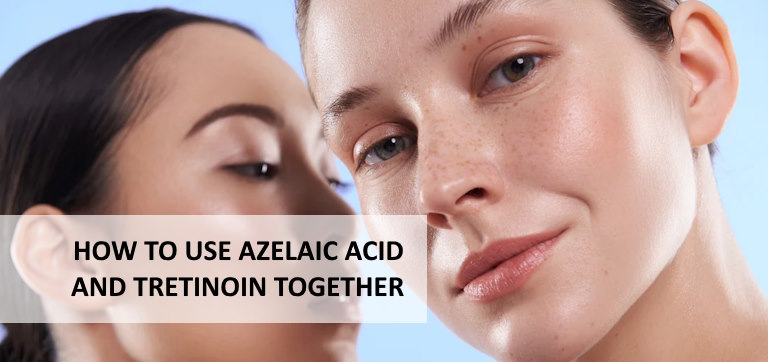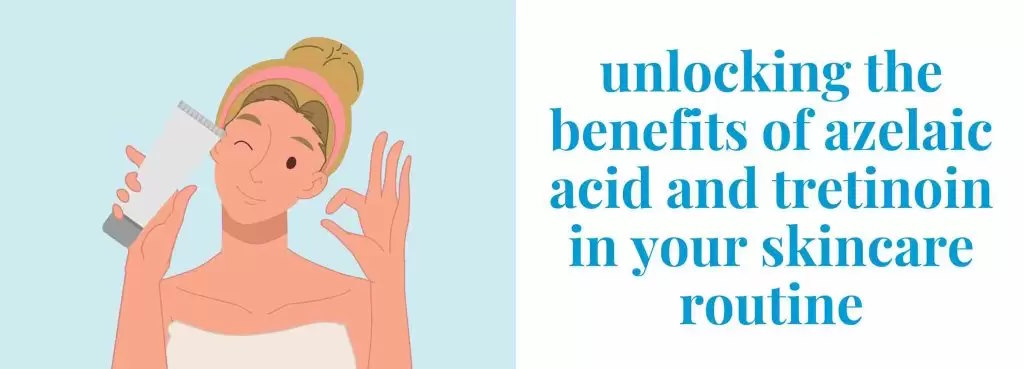How To Use Azelaic Acid and Tretinoin Together
Table of Contents
Azelaic Acid and Tretinoin are two very effective ingredients in dermatology known for their efficacy in treating various skin concerns. Azelaic Acid, a naturally occurring dicarboxylic acid with anti-inflammatory and antimicrobial properties, is commonly used to treat acne, rosacea, and hyperpigmentation. Tretinoin is a retinoid derivative of vitamin A known for its ability to increase skin cell turnover, treat acne, and reduce the appearance of fine lines, wrinkles, and hyperpigmentation.
This guide aims to provide practical insights into how to use azelaic acid and tretinoin together within a skincare routine. It will cover step-by-step instructions on application methods, tretinoin or azelaic acid first, can azelaic acid and tretinoin be used together, how to layer azelaic acid and tretinoin, tretinoin and azelaic acid together, azelaic acid and tretinoin cream side effects, how to layer niacinamide, azelaic acid and tretinoin, can i use azelaic acid with tretinoin and hydroquinone, and strategies for managing potential side effects.
Can Azelaic Acid and Tretinoin Be Used Together?
Azelaic Acid and Tretinoin are generally considered compatible for concurrent use within a skincare regimen. Azelaic Acid primarily exerts its effects through anti-inflammatory and antimicrobial actions, while Tretinoin accelerates skin cell turnover and promotes collagen production. This complementary mode of action suggests that the simultaneous use of Azelaic Acid and Tretinoin can lead to combined benefits for certain skin concerns.
However, combining Azelaic Acid and Tretinoin can lead to increased potential for skin sensitivity and irritation. It is advisable to start with lower concentrations of each active and gradually increase usage frequency to minimize the risk of adverse reactions.
Despite the potential for increased skin sensitivity, can azelaic acid and tretinoin be used together? Yes, there are several potential benefits to using Azelaic Acid and Tretinoin together. The anti-inflammatory properties of Azelaic Acid can help mitigate the irritation and redness commonly associated with Tretinoin use, thereby improving tolerability. Additionally, the combined action of these actives may enhance the overall efficacy in addressing various skin concerns, including acne, hyperpigmentation, and photoaging.
-
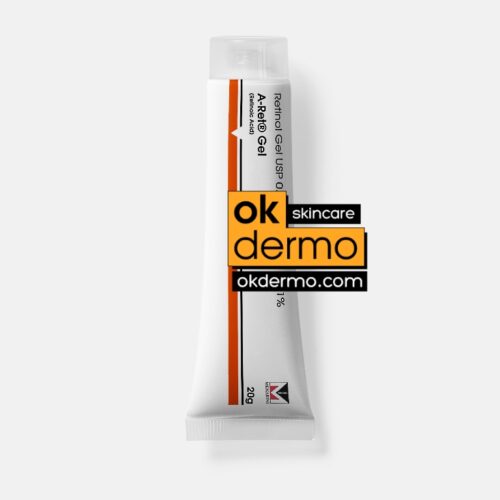
A-Ret® Tretinoin Retinoid Skin Gel
Tretinoin 0.025% / 0.05% / 0.1% USP
Size: 20g / 0.7oz
Brand name: Retin-A Gel, Atralin, Renova, Avita
From USD $25.00 Select options -
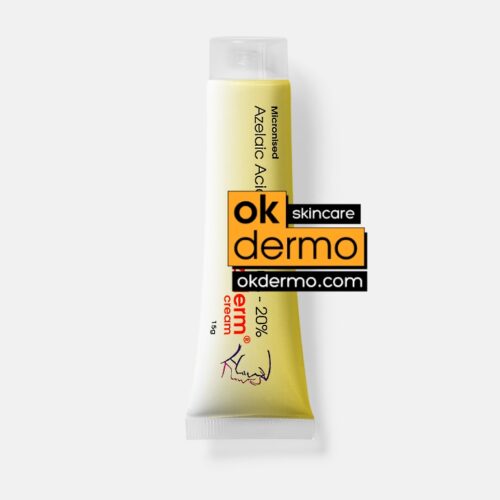
Aziderm Micro® Azelaic Acid Skin Cream
Pure Topical Azelaic Acid 10% / 15% / 20%
Size: 15g / 0.53oz
Brand name: Skinoren, Azelex, Finacea
From USD $24.00 Select options -
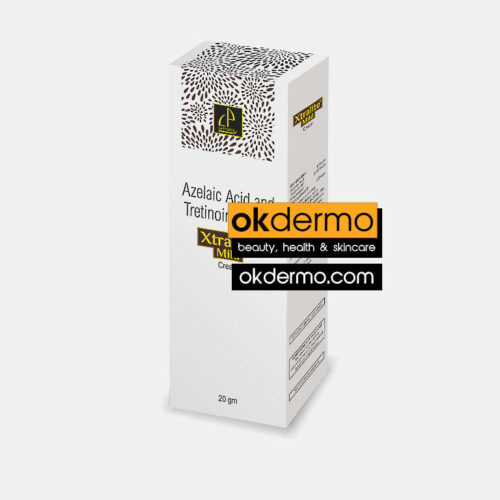
Xtralite® Tretinoin & Azelaic Acid Cream
Azelaic Acid 10% + Tretinoin 0.025% / 0.05%
Size: 20g / 0.7oz or 15g / 0.52oz
From USD $25.00 Select options
How to Layer Azelaic Acid and Tretinoin?
Proper application order is important when layering tretinoin, and azelaic acid together to ensure optimal efficacy and minimal adverse effects. The sequence of application, whether to apply tretinoin or azelaic acid first, influences the penetration, absorption, and interaction of these actives with the skin. Adhering to a structured layering regimen helps maximize the benefits of each active while minimizing the risk of irritation or potential interactions. Following is a guide for how to layer azelaic acid and tretinoin.
Step-by-step guide for layering:
- Cleansing the skin: Begin by thoroughly cleansing the skin with a gentle, pH-balanced cleanser to remove impurities, excess oil, and makeup. Cleansing prepares the skin for subsequent product absorption and ensures optimal penetration of Azelaic Acid and Tretinoin.
- Applying Azelaic Acid: After cleansing, apply a pea-sized amount of Azelaic Acid cream or gel to the entire face, focusing on areas prone to acne, rosacea, or hyperpigmentation. Gently massage the product into the skin using upward motions until fully absorbed. Allow the Azelaic Acid to dry for a few minutes before proceeding to the next step.
- Applying Tretinoin: Once the Azelaic Acid has been absorbed, apply a pea-sized amount of Tretinoin cream or gel to the skin, avoiding the delicate eye area and lips. Dispense the Tretinoin evenly across the face, ensuring thorough coverage. Massage the product gently into the skin using light, upward strokes. Allow the Tretinoin to penetrate for a few minutes before proceeding to the next step.
- Moisturizing: Following the application of Azelaic Acid and Tretinoin, apply a moisturizer suitable for your skin type and concerns. Choose a non-comedogenic, hydrating moisturizer to replenish moisture levels and soothe any potential dryness or irritation induced by the actives. Allow the moisturizer to fully absorb before moving on to the final step.
- Sunscreen application: Complete your skincare routine by applying a broad-spectrum sunscreen with an SPF of 30 or higher. Sunscreen is essential, especially when using Tretinoin, as it enhances photosensitivity and increases the risk of sunburn and UV damage. Apply sunscreen generously to all exposed areas of the skin, including the face, neck, and décolletage, and reapply every two hours when exposed to sunlight.
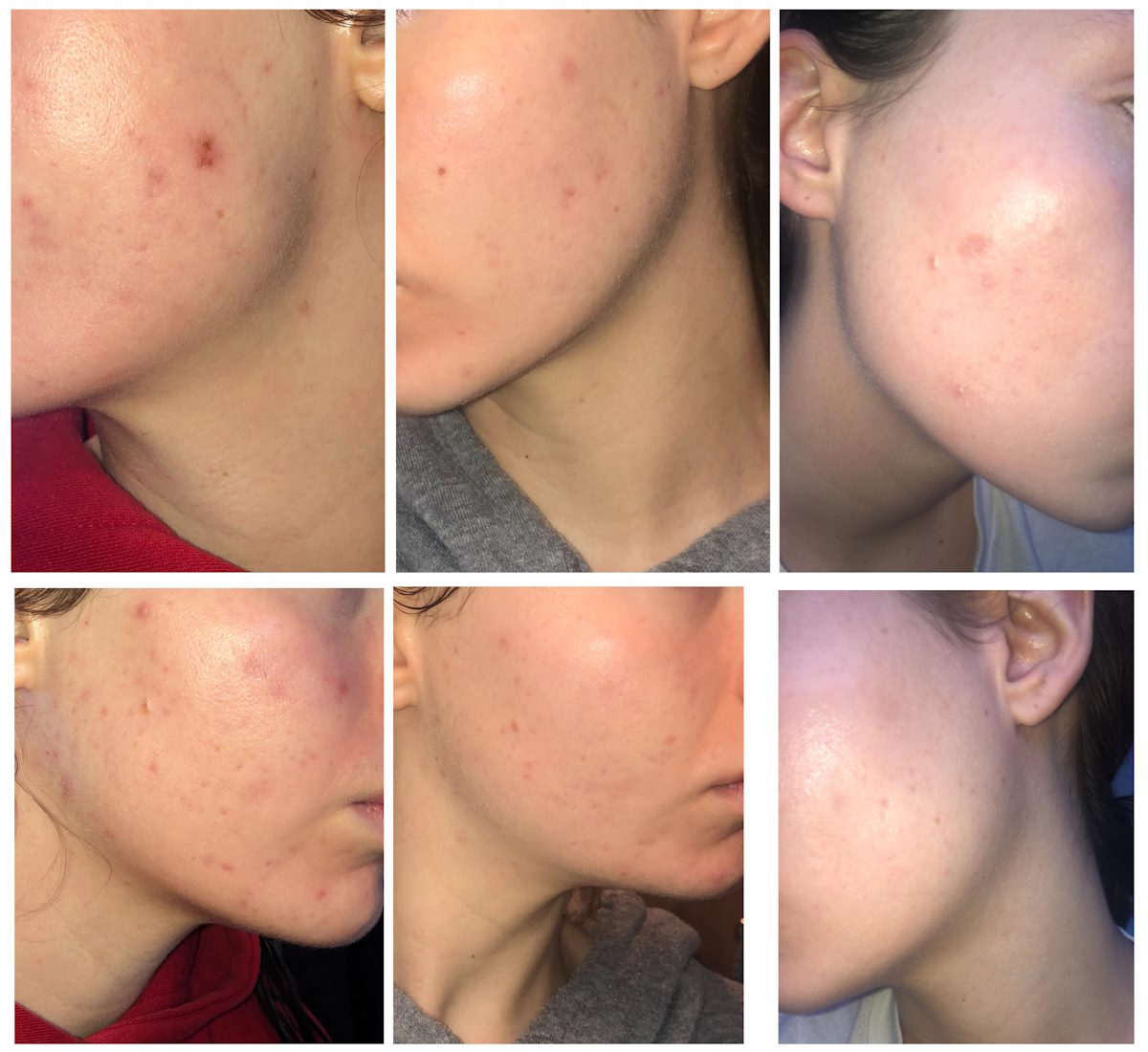
Azelaic Acid and Tretinoin Cream Side Effects
Common side effects of Azelaic Acid:
- Mild stinging or burning sensation upon application
- Temporary redness or irritation, especially during the initial stages of treatment
- Dryness or peeling of the skin
- Itching or tingling sensation
- Rare instances of contact dermatitis or allergic reactions
Common side effects of Tretinoin:
- Skin dryness, flakiness, or peeling
- Increased sensitivity to sunlight, leading to sunburn or irritation
- Temporary worsening of acne or skin texture
- Mild stinging or burning sensation
- Redness or irritation, particularly during the initial weeks of use
Potential side effects of using both azelaic acid and tretinoin cream together:
- Heightened skin sensitivity and irritation due to the combined effects of Azelaic Acid and Tretinoin
- Increased risk of dryness, redness, and peeling, particularly in individuals with sensitive or reactive skin types
- Potential exacerbation of side effects such as stinging, burning, or itching
Tips for minimizing azelaic acid and tretinoin cream side effects:
- Start with lower concentrations of Azelaic Acid and Tretinoin and gradually increase usage frequency as tolerated.
- Use a gentle, non-irritating cleanser and moisturizer to minimize dryness and irritation.
- Apply Azelaic Acid and Tretinoin to completely dry skin to reduce the risk of irritation.
- Consider buffering Tretinoin with moisturizer or applying it every other night initially to minimize irritation.
- Use sunscreen daily and limit sun exposure, as both Azelaic Acid and Tretinoin increase photosensitivity.
- Avoid using harsh or abrasive skincare products, such as exfoliants or astringents, while using Azelaic Acid and Tretinoin.
- Consult a dermatologist if experiencing persistent or severe side effects, as they may recommend adjusting the treatment regimen or prescribing additional supportive measures.
How to Layer Niacinamide, Azelaic Acid, and Tretinoin
Benefits of combining niacinamide with Azelaic Acid and Tretinoin:
Niacinamide, a form of vitamin B3, complements the effects of Azelaic Acid and Tretinoin by addressing multiple skin concerns. Niacinamide possesses anti-inflammatory properties, which can help mitigate the irritation and redness often associated with Tretinoin use.
Additionally, niacinamide aids in regulating sebum production, making it beneficial for individuals dealing with acne or oily skin. When used in conjunction with Azelaic Acid and Tretinoin, niacinamide can contribute to a more balanced and healthier complexion, promoting overall skin health.
Proper order for layering:
- Cleanse the skin thoroughly with a gentle, pH-balanced cleanser to remove impurities and prepare the skin for subsequent product application.
- Apply niacinamide serum or moisturizer to the entire face, focusing on areas of concern such as acne, hyperpigmentation, or uneven texture. Allow the niacinamide to absorb fully before proceeding to the next step.
- Follow with Azelaic Acid cream or gel, applying a pea-sized amount to the skin and gently massaging it in until fully absorbed. Allow the Azelaic Acid to dry for a few minutes before continuing.
- Apply Tretinoin cream or gel evenly across the face, avoiding the delicate eye area and lips. Massage the product into the skin using light, upward strokes and allow it to penetrate for several minutes.
- Complete your skincare routine by moisturizing with a hydrating moisturizer to lock in moisture and soothe any potential dryness or irritation induced by the actives.
- Finish with sunscreen application to protect the skin from harmful UV rays, especially when using Tretinoin.
Tips for effective usage:
- Incorporate niacinamide into your skincare routine gradually to assess tolerance and compatibility with other actives.
- Allow each product to fully absorb into the skin before applying the next layer to maximize efficacy and minimize potential interactions.
- Consider using niacinamide in the morning and Azelaic Acid/Tretinoin in the evening to avoid overloading the skin with active ingredients.
- Monitor your skin for any signs of irritation or sensitivity and adjust the frequency of product usage accordingly.
- Consult with a dermatologist if experiencing persistent or severe skin reactions, as they can provide personalized recommendations based on your skin type and concerns.
Can I Use Azelaic Acid with Tretinoin and Hydroquinone?
Hydroquinone is a topical skin-lightening agent that inhibits melanin production, often used to treat hyperpigmentation, melasma, and certain types of dark spots. Combining Azelaic Acid, Tretinoin, and Hydroquinone may increase the risk of skin irritation, dryness, and sensitivity, particularly in individuals with sensitive or reactive skin types.
Potential benefits and risks of combining all three:
- Combining Azelaic Acid, Tretinoin, and Hydroquinone may offer synergistic benefits in treating hyperpigmentation, melasma, and certain types of acne, as each ingredient targets different aspects of skin pigmentation and texture.
- However, the combination of these potent actives may also increase the risk of adverse reactions, including skin irritation, redness, dryness, or sensitization.
- Additionally, using Hydroquinone in combination with Tretinoin and Azelaic Acid may increase the risk of paradoxical hyperpigmentation or other unwanted side effects, particularly with prolonged or excessive use.
Recommendations for safe usage:
- Consult with a dermatologist or healthcare professional before combining Azelaic Acid, Tretinoin, and Hydroquinone to assess suitability and minimize potential risks.
- Start with lower concentrations of each active and gradually increase usage frequency as tolerated.
- Monitor your skin closely for any signs of irritation, sensitivity, or adverse reactions, and discontinue use if necessary.
- Use sunscreen daily and limit sun exposure, as these actives may increase photosensitivity and the risk of sunburn.
- Consider alternating the use of these actives or using them at different times of the day to minimize potential interactions and side effects.
Frequently Asked Questions (FAQs) about Using Azelaic Acid and Tretinoin Together
Can you use azelaic acid and tretinoin at the same time?
Yes, you can use azelaic acid and tretinoin at the same time, but it’s important to consider your skin’s tolerance and sensitivity. Both azelaic acid and tretinoin have their own benefits for the skin, with azelaic acid primarily targeting acne, rosacea, and hyperpigmentation, while tretinoin focuses on acne, fine lines, and photoaging. Combining them can potentially enhance their efficacy, but it’s advisable to start with a lower concentration of each active and gradually increase the frequency of use to minimize the risk of irritation or adverse reactions. It’s also recommended to consult with a dermatologist before incorporating both actives into your skincare routine.
What order do you put azelaic acid and retinol in?
When using both tretinoin, and azelaic acid together, it’s important to consider the order of application, whether to apply tretinoin or azelaic acid first, to maximize their benefits without compromising efficacy. Generally, azelaic acid can be applied first, followed by retinol or tretinoin. Azelaic acid can help to mitigate potential irritation or sensitivity caused by retinol or tretinoin, making it a suitable choice for application before these potent retinoids. However, it’s essential to allow each product to fully absorb into the skin before applying the next layer to ensure optimal efficacy.
What should I layer with tretinoin?
When layering tretinoin within your skincare routine, it’s important to prioritize gentle, hydrating products that can help to minimize potential irritation or dryness associated with retinoid use. A simple and effective regimen may include a gentle cleanser, followed by a hydrating moisturizer to replenish moisture levels and soothe the skin. Additionally, incorporating a broad-spectrum sunscreen during the day is essential to protect the skin from UV damage, as tretinoin can increase photosensitivity. Avoid using harsh or abrasive products, such as exfoliants or astringents, while using tretinoin to prevent further irritation.
Do you put tretinoin on before or after moisturizer?
Tretinoin is typically applied before moisturizer in your skincare routine. After cleansing your skin, allow it to dry completely before applying a pea-sized amount of tretinoin cream or gel evenly across the face, avoiding the delicate eye area and lips. Massage the tretinoin gently into the skin using upward strokes and allow it to absorb fully before applying moisturizer. Applying moisturizer after tretinoin helps to lock in moisture and minimize potential dryness or irritation induced by the retinoid. However, if you find that your skin is particularly sensitive to tretinoin, you can try buffering it with moisturizer by applying moisturizer first and then tretinoin to help reduce irritation.
References:
- https://www.sciencedirect.com/science/article/abs/pii/S0190962287702941
- https://europepmc.org/article/NBK/nbk557478
- https://link.springer.com/article/10.2165/00003495-199141050-00007
- https://www.taylorfrancis.com/chapters/edit/10.1201/9780429456732-3/mechanism-action-topical-retinoids-s%C3%BCmeyre-seda-ertekin-mehmet-salih-gurel
- https://www.nejm.org/doi/full/10.1056/NEJM199308193290803
- https://www.tandfonline.com/doi/abs/10.1517/14740338.2013.740456
- http://jpad.com.pk/index.php/jpad/article/view/487
- https://www.sciencedirect.com/science/article/pii/S0022202X15442642
Post by:
Dr.Marcella Jiovanni
Health and Beauty Expert
“Marcella Jiovanni actively promotes the importance of maintaining healthy skin, she envisions the future of dermatology as moving away from pure medical, pharmacological dermatology and flowing more toward a holistic approach to wellness and skincare.”

